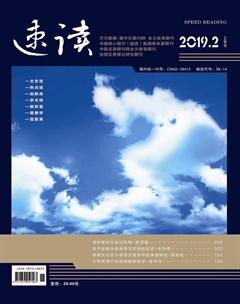“The Other”:the Conflict in Culture Communication
顾竹盈
Abstract: with the advance of the globe world,culture communication becomes a popular issue to research on.In different cultures,there are different roles.One is called “self”,and the other is called “the other”.“Self” and “the other” influence each other.
Key words:“The other”;culture communication;conflict
In the essay “Tradition and Innovation: On the Features and Implications of Late Qing English Teaching”,the writer points out: “Intercultural communication is the integration of different cultures all over the world,and is the equal dialogue among different cultures.”The word “equal” brought my attention.Did those different cultures really have the “equal” position in the intercultural communication? My answer is negative.
1 What is “the other”?
The concept of “the other” is one of the most important key words in the history of western thoughts.The concept originated from Platos philosophy,and was broadly discussed in Hegels philosophy,phenomenology,existentialism,post-structuralism,post-colonial criticism and feminism.The utilization of this concept was concentrated in post-colonial criticism.
In the theory of the post-colonial criticism,there is a master-slave relationship between the western and eastern civilization.One culture empowers itself with a preconceived ideology and convinces its superiority over any other culture.Because of the powerful military force and colonial policy,western civilization gains a superior position in the culture communication.Meanwhile,the colonized eastern civilization became a subordinate culture.The superior culture becomes “self” and the subordinate one becomes “the other”.Edward Wadie Said pointed out the basic reason: “they are not us”.
Although China has never been thoroughly colonized,China also went through the crisis of colonization over one hundred years Since 1840,Chinese culture constantly and repeatedly experienced self-subjectivization and self-othering.In the church school,missionaries thought they are “self” and Chinese is just “the other”.And that caused a crisis of assimilation,a crisis of Chinese tradition and a crisis of cultural colonization.
2 Equality versus inequality
Jean-Jacques Rousseau pointed out there are two kinds of inequalities in human society.One is natural inequality,such as age,body,physical strength,intelligence and so on.The other is mental or policy inequality with was ruled by one identical convention.Rousseau thought those two inequalities commonly exit in the modern society and developed into a culture characteristic.So the the equal dialogue among different cultures probably doesnt exist.
The essence of intercultural communication is the conflict,the interaction,the merging and the assimilation of cultures.“Melting Pot” theory is a famous American assimilation theory.Israel Zangwill first came up with the term “Melting Pot” in his play The Melting Pot in 1908.The theory is to make a heterogeneous society become more homogeneous,and make the different elements melt together and to become a harmonious whole with a common culture.Vice versa,the melting pot theory is to make a homogeneous society become more heterogeneous through the influx of foreign elements with different cultural background with a potential creation of disharmony with the previous culture.The theory is a fair assimilation between ethnic groups,which is not mandatory and focuses on the assimilation process.However,it should be noted that the melting pot theory as an equal assimilation theory is not to say that the cultural values of different ethnic groups must be reflected equally in the integration process,or have equal weight in the newly formed “homogeneity” culture.
3 Conclusion
Due to the differences in “cultural potential”,different ethnic groups play distinct roles in the process of assimilation.It is neither realistic nor equal to asking different ethnic groups to assimilate equally in the process of integration.It may be equivalent to a disguised form of racism.
References
[1]顧卫星.传统与创新:试论晚清英语教学特点及其启示[J].外语与外语教学,2009(5).
[2]Said,E.W.Culture and Imperialism[M].London: Chatto & Windus,1993.
[3]Rousseau.Discourse on the Origin and Basis of Inequality Among Men[M].Indiana: Hackett Publishing Co.,1992.

